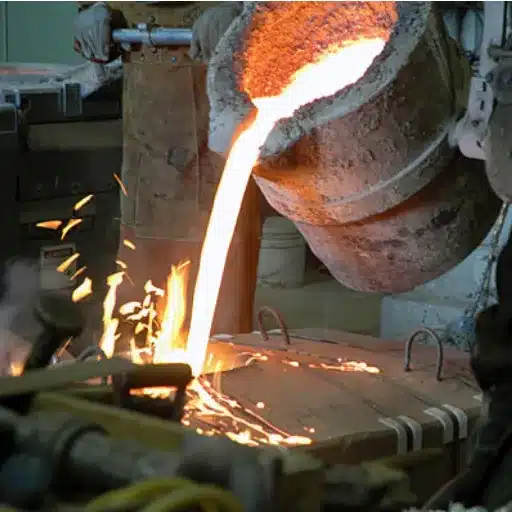Sleek and contemporary, stainless steel comes in different grades, most popular among them being 304 and 316. Each type has various applications, which can make it quite difficult to choose which is the best for your engineering project. Allow us to help you decide which type is the optimal selection for your task. In the following elaborate guide, we will delve into the distinctions of the composition, corrosion resistance, and ideal applications of these two highly sought-after materials. Outlined here is all the necessary information regarding these two grades needed to help set the record straight for engineers, artists, and any other interested individuals. Stay tuned as we explain the differences between 304 and 316 stainless steel and how each type performs under different settings.
What is the Chemical Composition of 304 and 316 Stainless Steel?
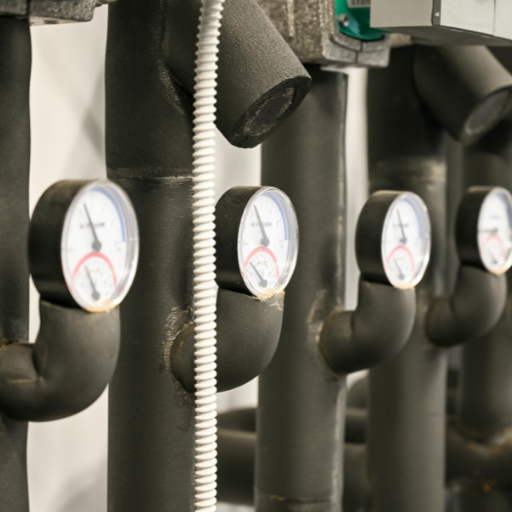
The primary constituents of 304 stainless steel are around 18-20% chromium and 8-10.5% nickel, while the other major constituent is iron and divergent minor components which include carbon (up to 0.08%), manganese, and silicon. While in the care of ferritic stainless alloys, 316 stainless steel has an added 16-18 % chromium and 10-14% nickel, just like 304, but with the addition of around 2-3% molybdenum. This addition significantly improves the resistance to corrosion from the most aggressive environments. It also increases the grade’s resistance to overall corrosion. As another grade, both grades have a similar base composition, but the most identifiable difference between them is the amount of molybdenum.
Exploring the Alloy Composition of 304 Stainless Steel
304 stainless steel is a type of iron alloy steel belonging to the austenitic grade category and contains between 18% and 20% of chromium along with 8% to 10.5% of nickel. Due to these elements, the material displays strong resistance to corrosion oxidation, and in some specific cases, its versatility is highlighted. Other iron alloying elements include up to 2% of manganese, 1% of silicon, and 0.08% of carbon, which contribute positively to modifying the mechanical strength, durability, and toughness of the alloy. Additionally, and to a lesser extent, sulfur and phosphorus have been added to the alloy, but in minute concentrations in order to ensure a favorable strength-to-weight ratio.
304 stainless steel is commonly used in the following fields: food and kitchen applications, food processing appliances, chemical containers, nostalgic and modern architecture, etc., due to its strengthening factors, above mentioned properties, and easy fabrication. While being dense and durable, the alloy is very versatile, which is one of the reasons chromium with nickel copper are used as driers in paints. To prevent internal corrosion and oxidation of the alloy, the protective oxide layer that prevents rusting functions. The main strength lies in ductile properties and the ability to be processed and shaped effortlessly.
In addition, the alloy exhibits distinct characteristics such as the finest tensile strength at a lower range of 515 megapascals, and melting temperatures ranging from 760 to 815 degrees Celsius. For these reasons, 304 is viewed as a trustworthy option for access in lower industrial environments and even for home use.
Understanding the 316 Stainless Steel Composition
316 stainless steel is best known for its improvement in corrosion resistance along with durability, making it well-suited for harsh conditions. The alloy consists of about 16-18% chromium and 10-14% nickel, which provides an oxide layer that safeguards against corrosion. A key differentiator of 316 is the addition of 2-3% molybdenum, which greatly aids in restraining pitting and crevice corrosion, especially in chloride-laden surroundings like the sea or chemical processing factories.
This grade of steel also exhibits an outstanding average tensile strength of about 579 MPa and performs optimally from cryogenic temperatures up to 1400 degrees F (760 degrees Celsius). Moreover, it has outstanding weldability and formability, which makes it a material of choice in medical manufacturing, food processing, and offshore construction industries. These outstanding features of 316 stainless steel reflect why it is considered a super alloy under extreme conditions.
Key Differences Between 304 and 316 in Terms of Chemical Makeup
The main difference between 304 and 316 stainless steel is their grade composition, which affects their property functionalities and their uses. Both alloys are made up of iron, chromium, and nickel, but there is an added 2 to 3 percent of molybdenum in 316. This addition helps fortify 316 against the morbidly corrosive effects of harsh environmental factors such as chlorides.
304 stainless steel usually has 18 percent chromium and 8 percent nickel, which is also referred to as “18-8 stainless steel”. In contrast, 316 stainless steel’s average is 16-18 percent molybdenum, as well as 10-14 percent nickel and additional molybdenum. Thanks to the inclusion of molybdenum, 316 has greater resistance to pitting and crevice corrosion. This makes 316 better suited to marine, saltwater, strong acid, and alkali applications.
Both 304 and 316 provide their own unique benefits, as 304 is exceptional value for pricing and offers superior formability, while 316 shines over 304 in more aggressive, stern and harsh environments. The differences in these chemical compositions truly showcases how critical choosing the right alloy is based on the specific application requirements.
How Does Corrosion Resistance Vary Between 304 and 316 Stainless Steel?
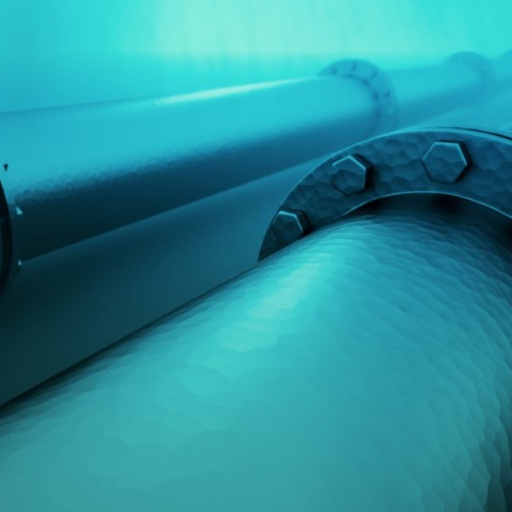
Two variations of stainless steel, 304 and 316, differ in corrosion resistance mainly because of the molybdenum addition in the latter. This element further improves 316’s performance in resisting pitting and crevice corrosion in chloride-active environments, such as coastal regions or areas with salt water. Incidentally, 304 stainless steel is greatly corrosion resistant, but in comparison with 316, it is more vulnerable to harm in hostile conditions. For cases where there is routine contact with harsh chemicals or saltwater, 316 stainless steel would be a better option.
The Role of Chloride in Corrosion
The breakdown of the passive oxide layer that protects stainless steel from situations like pitting or crevice corrosion is caused due to chlorides, which adds to the stainless steel corrosion issue. This unstable layer makes the underlying metal susceptible to generalized attacks. As such, materials of construction like 316 stainless steel are in greater demand with increased chloride concentration due to their improved resistance to chloride corrosion.
Why 316 Stainless Steel Offers Superior Corrosion Resistance
316 stainless steel stands out for its improved resistance to corrosion, especially in difficult conditions. These benefits result from the inclusion of molybdenum, which is usually found in the alloy in a quantity of about 2-3% by weight. This element greatly enhances the resistance to corrosion in chloride environments, such as pitting and crevice corrosion. For instance, tests have proven that 316 stainless steel has higher pitting resistance equivalent numbers (PREN) than 304 stainless steel, thus making it favorable for marine applications, chemical processing, and regions with high chloride concentrations.
In addition, 316 stainless steel exhibits great resistance to corrosion in acidic or industrial conditions. It can withstand corrosion in sulfuric acid, hydrochloric acid, and acetic acid solutions of different concentrations and temperatures. As reported, the maximum chloride content tolerable by 316 stainless steel is about 1000 ppm, with the possibility of change due to temperature or particular conditions. These features prove why it is widely used in industries that require materials to endure severe conditions while maintaining structural integrity for a long time.
Comparing Corrosion Resistant Properties of 304 vs 316
While both types of stainless steel, 304 and 316, are highly resistant to corrosion, there is still a difference in their suitability in different applications and surroundings. These two types differ primarily in their chemical composition, specifically in the quantity of molybdenum contained in each type of steel.
316 has about 2-3% molybdenum, which aids in its having greater resistance to pitting and crevice corrosion in the presence of chlorides. For example, 316 can sustain chloride concentrations of up to 1000 ppm, allowing it to be used in marine environments, in chemical processing, and in places that experience de-icing salt exposure. 304 stainless steel does not contain molybdenum and is therefore more prone to chloride corrosion, and is better utilized in less aggressive conditions.
When considering resistance to phosphoric and sulfuric acids, 316 outperforms 304 due to its weaker durability and structural integrity under low to medium concentrations of these acids. A good example is 316, meeting 20% concentration of sulfuric acid at room temperature, while 304 would easily degrade under those conditions.
Both types of 304 and 316 exhibit excellent oxidation resistance. 316 tends to have better corrosion resistance due to an increased amount of nickel and molybdenum in the alloys. In contrast, 304 is still the better economic choice for less exposure to harsh chemicals or high salinity conditions.
Grasping the subtle distinctions of 304 and 316 is paramount when it comes to choosing materials, as it greatly affects the performance and lifespan in various conditions.
What are the Mechanical Properties of 304 and 316 Stainless Steel?
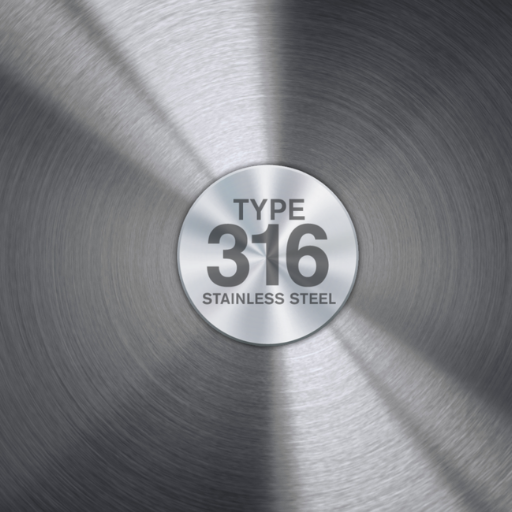
Thanks to their outstanding mechanical performance, 304 and 316 stainless steels are highly versatile materials for a multitude of industries. Their primary properties are as follows:
- Tensile Strength: Stainless steel 304 has a tensile strength of approximately 515 MPa (75,000 psi), while 316 has a similar tensile strength between 515 and 620 MPa (75,000 and 90,000 psi), depending on the grade. 316, however, possesses one additional amount according to the grade that is higher than the specific amount.
- Yield Strength: Yield strength for 304 is approximately 205 MPa (30,000 psi), which is the same as what 316 possesses. The difference comes with the range that is roughly 205-290 MPa (30,000-42,000 psi) for 316.
- Hardness: They show approximately the same hardness in both grades. The score on the Brinell hardness test for 304 is roughly 201 and slightly lower or equal for 316.
- Ductility: They both possess the same level of ductility, which allows for effective manipulation that can be used in many processes.
Though their mechanical traits differ only slightly, 316 stainless steel provides better corrosion resistance, which may be critical in more aggressive settings.
Examining the Tensile Strength of 304 Stainless Steel
The tensile strength of 304 stainless steel is estimated to be between 515 to 750 MPa (megapascal), depending on the processing and treatment it undergoes. Due to this exceptional tensile strength, 304 stainless steel is widely used in construction, automotive components, and industrial machines where sustained structural integrity and strength is required. Moreover, its ability to resist deformation qualitatively ensures that it sustains significant stress without changing shape, thereby preserving its functionality over an extended period. These features are prime examples that demonstrate the flexibility of 304 stainless steel across many industries.
Evaluating the 316 Grade in Terms of Mechanical Performance
316 grade stainless steel has its best-known features in its superior mechanical properties, which are important in an environment where corrosion resistance and durability are a requirement. The grade contains molybdenum in addition to chromium and nickel, and this increases its resistance to chloride corrosion and pitting. It also has outstanding creep resistance at elevated temperatures and a tensile strength of almost 480 to 620 megapascals.
Moreover, the ability to resist stress corrosion cracking in a saline environment makes 316 stainless steel perform outstandingly well in marine and industrial applications. It also has a 40% elongation at break, making it tough yet flexible, great for use in processing equipment for chemicals, marine hardware, and medical instruments. The combination of these features guarantees reliability in performance and stability under most conditions while being operational for long durations.
Comparative Analysis of Mechanical Properties
When considering the mechanical characteristics of materials for high-performance applications, tensile, yield, elongation at break, and hardness are some of the aspects to be observed. A case in point is austenitic stainless steels like 316L, which have a tensile strength of about 485 MPa and a yield strength of 170 MPa. Their elongation at break is often in the vicinity of 40-50%, which indicates outstanding ductility and formability, critical for intricate forming processes and impact-resistant designs.
In contrast, duplex stainless steels, like 2205, have much greater tensile strength that is commonly over 620 MPa, with yield strength close to 450 MPa. They are also considered to have moderate stretchability, since their elongation at break is in the 25-30% range. These qualities make duplex stainless steels preferable in industries where higher mechanical loads are expected, like oil and gas pipelines, and bridge construction.
Another remarkable material is the titanium alloys, such as Ti-6Al-4V, which have even higher tensile strength than duplex stainless steels, averaging about 900 MPa with yield strength of about 880 MPa. These alloys have a very high strength-to-weight ratio, self-supporting at break with an elongation of 10-15%. This makes their use suitable for aerospace and biomedical engineering applications.
Hardness has a crucial impact on mechanical functions. Consider, for instance, that 316L stainless steel has an average hardness of 150 HB, whereas duplex steels, like 2205, have values of about 290 HB. Hardness values for titanium alloys, such as Ti-6Al-4V, exceeding 350 HB, allow for considerable wear resistance.
This comparison illustrates why it is essential to choose materials relative to certain operational requirements with regard to the compromise between strength, pliability, and the material’s ability to withstand damage for effective and efficient functionality in the desired applications.
How Do Heat Resistance Capabilities Differ in 304 vs 316 Stainless Steel?

Though 304 and 316 stainless steel possess outstanding resistance to heat, their behavior at elevated temperature levels differs significantly:
- 304 Stainless Steel: This grade can endure continuous use up to 870°C (1598°F) and intermittent use up to 925°C (1697°F). It is compatible with almost all usable situations of everyday use involving high temperatures.
- 316 Stainless Steel: 316 is similar to 304 in terms of heat resistance, but unlike 304, it performs better in very corrosive and high temperatures due to the presence of molybdenum.
In cases where heat exposure is regular, overall corrosion resistance is required, and durability of material is a focus, 316 grade is preferred. Rest assured, 304 grade is far more affordable when dealing with standard high temperature operations where extreme corrosion is not a variable.
Understanding High Temperature Resistance in 304
304 stainless steel is famous for its high temperature performance, making it a good option for many industrial uses. For intermittent use, its maximum operating temperature is about 870 degrees Celsius (1598 degrees Fahrenheit), and for continuous use, it is 925 degrees Celsius (1697 degrees Fahrenheit). These values depend on the alloy’s composition and the surroundings. It is important for the material to retain its strength and resist scaling because that allows for proper structural integrity.
It should be pointed out, however, that holding high temperatures for a long time can cause carbide precipitation, which may change the degree of corrosion resistance some locations have. To offset this, low-carbon variants like 304L are commonly used because they have higher resistance to such conditions.
At elevated temperatures, 304 stainless steel is used for heat exchangers and furnace parts as well as exhaust manifolds due to its affordability and durability. Research indicates it is cheaper than other grades of stainless steel for high temperature jobs,s particularly in areas with low aggressive corrosive factors.
Assessing the Oxidation Resistance of 316 Stainless Steel
316 stainless steel is well known for its high oxidation resistance at high temperatures, which aids in its use for more demanding industrial applications. This grade has increased amounts of molybdenum, which alloy improves resistance to pitting and crevice corrosion and also aids further oxidation resistance in extreme environments. Research shows that 316 stainless steel is capable of withstanding continuous exposure to heat of 1600°F (870°C) and intermittent exposure up to 1700°F (925°C) without losing structural integrity.
Moreover, 316 stainless steel, when heated in oxygen, forms a self-renewing barrier of chromium oxide, which serves as protection against galvanic corrosion. This property enables it to excel in heat exchange equipment, components in the chemical industry, as well as furnace parts. Industry sources claim that its oxidation is significantly lower in the presence of air, steam and mild acid, which makes it useful in engineering fields with the necessity of high corrosion resistance.
What are the Applications for 304 and 316 Stainless Steel?
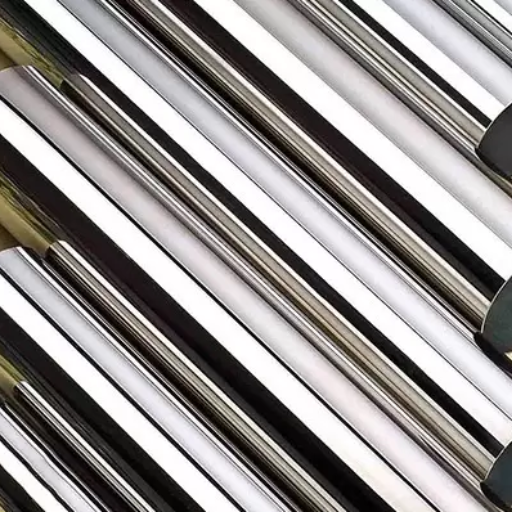
304 Stainless Steel:
- Often employed in the fabrication of sinks, cookware, and utensils.
- Perfect for construction purposes, such as for railings and panels.
- Incorporated into standard parts of vehicles and aircraft in the automotive and aerospace industries.
-
Used in the fabrication of food processing equipment because of its cleanability.
316 Stainless Steel:
- Shipped to marine locations, for example, fittings on boats and coastal buildings, are most popular.
- Prevalently utilized in the tanks and piping of the chemical and pharmaceutical sector as well.
- Critical for medical devices and surgical instruments of advanced corrosion resistance.
-
Appropriate for industries that work with acids, salts, and other corrosive materials.
Common Uses for 304 Stainless Steel
The 304 grade stainless steel is one of the most popular and widely utilized types of stainless steel across the globe due to its superb corrosion resistance, great strength, and relatively low cost. Here are some detailed applications and their scope:
- Kitchen Equipment and Appliances: Chosen for sinks, benchtops, and cookware owing to the ever-increasing hygienic properties, durability, and ease of cleaning. Research shows that more than 50% of stainless equipment in commercial kitchens is made from 304 stainless steel.
- Food and Beverage Industry: Also ideal for food grade storage vats and tanks where cleanliness, nonreactive to oxidizing substances, and ease of cleaning is crucial. The nonreaction with food guarantees food will remain safe even when exposed to acidic products such as citrus juices and tomato based products.
- Automotive Components: Commonly found in trim and decorative exhaust manifolds due to their non-rusting and extreme temperature capabilities. Unlike other grades, this adds aesthetic qualities to vehicles while increasing longevity.
- Construction and Architecture: Low maintenance and durable structural cladding, handrails and frames can be made from 304 stainless steel. Its aesthetic value and robustness makes it ideal in construction.
- Industrial Applications: Utilized in storage tanks, machinery, and pipelines that work under mild environmental conditions. Relatively easy to manufacture and weld, making it suitable for diverse industrial applications.
- Household Products: From utensils to screws and furniture, stainless steel blend cost and performance, giving a premium shiny look to everyday objects.
Displaying remarkable durability, corrosion resistance, and versatility formation, 304 stainless steel remains one of the best options in industries where quality and functionality meet affordability.
Why 316 Stainless Steel is Widely Used in Marine Environments
316 stainless steel is widely preferred in maritime applications because of its significant resistance to corrosion caused by seawater and chloride ions. This grade of stainless steel contains around 2-3% molybdenum, which greatly increases resistance to pitting and crevice corrosion. Molybdenum makes 316 stainless steel much stronger than 304 stainless steel in salt water and humid environments.
Research suggests that 316 stainless steel can withstand marine environments for several years without losing its structural integrity, subsequently minimizing downtimes in maintenance and replacing components. It is utilized in welding and fabrication of ships, offshore platforms, and bolts, fittings, and anchoring equipment. In these applications, long lasting durability is essential. Furthermore, 316 stainless steel is non-reactive and is therefore safe to be used in underwater pipelines, and desalination plants.
With the admixture of strength, the ability to withstand weathering, and long service life, 316 stainless steel proves to be dependable in some of the harshest environments.
Deciding Between 304 or 316 for Specific Applications
Think about the characteristics of each grade and their costs when deciding on the application of 304 versus 316 stainless steel, as both grades carry their individual pros and cons.
304 Stainless Steel: This is the most widely used and flexible grade of stainless steel, and its use is common in the manufacturing of both commercial and residential indoor furniture, kitchen equipment, and environment-controlled buildings due to it having good corrosion resistance in mild conditions due to it containing around 18% chromium and 8% nickel. However, 304’s resistance is significantly lower than that of other steels when dealing with chloride-driven corrosion types like pitting or crevice corrosion, which takes place more rapidly in saltwater environments.
316 Stainless Steel: 316 also has superior corrosion resistance due to the inclusion of around 16% chromium, 10% nickel, and 2-3% molybdenum, a stronger salt water resistance of the two metals. Molybdenum makes a key difference in the resistance to aggressive chemicals and saltwater. Molybdenum is known to serve the pharmaceutical and chemical processing industries the best. One of the offshore structures made out of 316 will have an extended service life due to less frequent replacement cycles. These points were discussed in an analysis done in 2018, where it was observed that 316 stainless steel in sea water had about 50 percent less corrosion pitting than 304 stainless steel
Cost Considerations: Even though 316 stainless steel is more expensive than 304 stainless steel by approximately 15-20%, its investment pays off over an extended period in environments with higher corrosion resistance. For applications with moderate exposure to chloride or aggressive chemicals, choosing 304 is cost-effective. However, choosing 316 in marine and industrial environments lowers maintenance and replacement costs over the long term.
In the end, comprehending the operating environment, degree of exposure to corrosive elements, and lifecycle impacts is critical to make the right choice in stainless steel grade for your requirements.
Reference
-
- EnGenius Technologies:
- Specializes in cloud-driven connectivity solutions, including SFP modules for data communication.
- Known for enterprise-grade security and flexibility.
- StarTech.com Ltd.:
- Offers a wide range of IT connectivity products, including SFP modules for various applications.
- Perle Systems:
- Provides high-speed SFP optical transceivers, focusing on industrial and IoT connectivity.
- EnGenius Technologies:
Frequently Asked Questions (FAQs)
Q: What is the main difference between 304 and 316 stainless steel?
A: The main difference between 304 and 316 stainless steel is their chemical composition. 316 stainless steel contains molybdenum, which provides superior resistance to corrosion compared to 304 grade. This makes 316 much more corrosion resistant, especially in environments exposed to seawater and other corrosive elements.
Q: Why is molybdenum added to 316 stainless steel?
A: Molybdenum is added to 316 stainless steel to enhance its corrosion resistance properties, especially against chlorides and industrial solvents. This addition makes 316 stainless steel’s corrosion resistance superior to that of type 304 stainless steel.
Q: How do the magnetic properties of 304 and 316 stainless steel differ?
A: Both 304 and 316 stainless steel are classified as austenitic stainless steel alloys, which means they are generally non-magnetic. However, they can become slightly magnetic when cold worked. The magnetic properties are more pronounced in type 304 stainless steel compared to type 316.
Q: What applications are best suited for 316 stainless steel?
A: 316 stainless steel is ideal for applications requiring superior resistance to corrosion, such as marine environments, chemical processing, and food processing equipment. It is often referred to as marine-grade stainless steel due to its excellent performance in seawater.
Q: Can 304 stainless steel be used in marine environments?
A: While 304 stainless steel can be used in some marine applications, it is not as corrosion resistant as 316 stainless steel when exposed to seawater. For environments with high chloride exposure, 316 is the preferred grade due to its enhanced corrosion resistance properties.
Q: What are the typical steel products made from 304 and 316 stainless steel?
A: Common steel products made from 304 stainless steel include kitchen appliances, automotive trim, and architectural structures. For 316 stainless steel, typical applications include chemical processing equipment, marine fittings, and medical devices.
Q: How does the nickel content affect the properties of 304 and 316 stainless steel?
A: Nickel is a crucial component in both 304 and 316 stainless steel alloys that enhances their corrosion resistance and toughness. 316 stainless steel typically contains slightly higher nickel content, contributing to its superior resistance to corrosion in harsh environments compared to 304 stainless steel.
Q: What’s the difference between 304 and 316 in terms of cost?
A: Generally, 316 stainless steel is more expensive than 304 due to the addition of molybdenum and higher nickel content. This cost difference reflects the enhanced corrosion resistance and durability of 316 stainless steel in demanding environments.
Q: Are there any visual differences between 304 and 316 stainless steel?
A: Visually, there are no significant differences between 304 and 316 stainless steel. Both have a similar shiny appearance. The differences lie in their chemical composition and performance in corrosive environments, not in their physical appearance.

